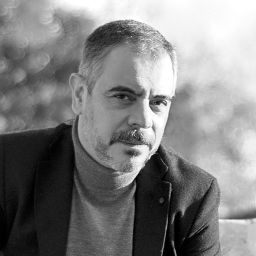Industrial Landscape: a resilient palimpsest of memory - The case of Lordelo do Ouro Woollen Mill, Porto, Portugal (1805-2020)
Mon statut pour la session
Quoi:
Paper
Quand:
11:00, Mercredi 31 Août 2022
(20 minutes)
Où:
UQAM, pavillon J.-A. De Sève (DS)
- DS-1570
In this work we discuss the concept of industrial landscape and its geographical and heritage implications. We understand this concept is open and involves the integration of very different and distinctive elements, both human-made structures and natural features. All these elements combined made part of the industrialization processes and its associated cultural transformation.
The main objective of this paper is to define the conceptual (and literal) boundaries of the landscape. To do so requires to perceive all the different layers that shape the landscape in an interpretative process. This process aggregates several scientific and social sensibilities. It is an interdisciplinary task (as Professor Buchanan defended) that needs to be open to different methodological approaches.
In order to work on these ideas, our research focuses on the case of a woollen mill in Lordelo (Porto, Northern Portugal). Lordelo is an example of how a manufactory infrastructure dated from the Portuguese early industrialization can be characterised as the centre of a larger territory. Consequently, the starting point of this research is the definition of the mill itself. However, in Lordelo’s dynamic urban area the remains of the original structures are not always easy to find. Although some historical records refer to two different woollen mills in this area that produced, at least, since 1781 and 1805, respectively, their exact locations were unknown prior to this research.
GIS technology was a determinant tool to identify the precise location of Lordelo’s mill – after 1821, the two mills mentioned merged in a single firm. Our methodology consisted mainly of the georeference of historical maps. We profusely used military maps from the Peninsular Wars era (1808-1810), since the factories were occupied by both French and British-Portuguese armies. This process implied not only a comprehension of the digital GIS technologies, but also deep research on historical cartography and other non-pictorial geographic references and sources, such as literary descriptions of some events involving the mill’s structures and surroundings. This included mostly war memories and veteran journals from the Peninsular War and the Portuguese 1832-1834 Civil War. These materials and tool let us locate the mill, which worked until 2005 and was demolished in 2016. In spite of the demolition, it was possible to identify some remains from 1853 and 1918.
The georeferenced historical maps and memories also allowed us to overview a larger context related to the structures and their memories: the inter-dynamic relation of the mill with the natural and human environment of Lordelo’s area. We considered here elements like the brook that fed the water-wheels, the topography of the terrain, the circulation routes and paths, the workers' settlements and other facilities, among other structures and features that can be aggregate in the concept of landscape.
This panoramic view of the territory and its elements enhances the disruptions and continuities of the community’s memory, namely its connection with their industrialization heritage. At the same time, it brings other topics into discussion, such as the post-industrial legacy and its relation with the city urban tissue, its preservation and articulation with the new values and transformations (obsolescence, gentrification), and some of its inherent social conflicts. The aggregation of all these aspects and structures, its study, its preservation and interpretation should play a key role in the management and assessment of this urban area (which is often seen as fractured and uprooted) in a social and cultural perspective.
